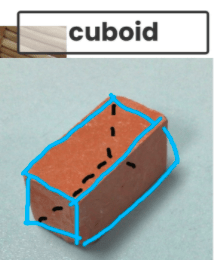Shapes in our Environment
We have been exploring geometric shapes and using associated vocabulary to help us represent and describe objects in real-world situations. We have been wondering how shapes can be transformed in different ways.
The students were invited to go on a shape scavenger hunt. During the task they have been identifying, naming, drawing and documenting the shapes in our environment.
They created a table to record the number of edges, vertices and faces of 3D shapes.

Students determined a line of symmetry and rotational symmetry of a 2D shape by folding and rotating paper shapes.

- Line of symmetry – A line that divides a 2D into halves that match when folded.
- Rotational Symmetry – When a shape can fit on itself exactly when turned.
The students showed a desire to create their own 3D shapes. The students were presented with the next task which invited them to manipulate, shape and explore a variety of materials to create their own 3D shapes.
During the task the students were encouraged to investigate:
- if changing the position of a shape alters its properties
- how specific vocabulary can be used to describe an object’s position in space
TASK: Creating 3D Shapes




Next, we wondered how we might find the right angles in shapes and objects. How might we create angles with our bodies? A demonstration was recorded pictorially. The students made their own ‘right angle finder’ by tracing, cutting and folding a circle.

TASK: A Right Angle Scavenger Hunt!


We continued to add to our vocabulary wall as the students used additional Mathematical vocabulary.




























